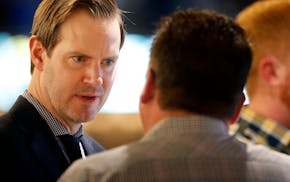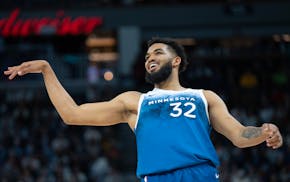The Twins had a regular infield of veterans Luis Castillo at second base, Juan Castro at shortstop and Tony Batista at third base to open the 2006 season. Nick Punto was a much-used backup and also the best defender at all of those positions.
Batista was a 32-year-old reclamation project. He had played the previous season in Japan. He was less than wide-ranging at third base. Castro was 34 and put in the lineup when Jason Bartlett was sent back to Class AAA.
The Twins had the look of also-rans for the first one-third of the schedule. They bottomed out on June 7, falling to 25-33. They managed to win four of the next five, yet remained in fourth place and 12 games behind in the AL Central.
The Twins called up Bartlett on June 14. They also released Batista and, one day later, traded Castro to Cincinnati for minor league outfielder Brandon Roberts.
Manager Ron Gardenhire debuted an infield that would emphasize range, quickness and good hands: Punto at third and Bartlett at shortstop, with Castillo still at second.
The Twins won 17 of the next 18. They made plays and pushed hard for three more months, finally passing Detroit to win the Central on the season's last day.
On Saturday, the Twins went with an infield similar to what they had starting in mid-June '06: Brian Dozier at second, Pedro Florimon at shortstop and Eduardo Escobar, starting for the first time in place of Trevor Plouffe at third base.
This wasn't a rest day for Plouffe. This was a reaction to another awful play on Friday night, when Plouffe ole'd a ball to his left to set up a scoring chance for Texas in the second inning. The Rangers' adventurous baserunning saved Plouffe that time.
"We're in a lot of close games,'' Gardenhire said. "We can't be giving away runs. We have to make the plays that a big-league team is supposed to make.''
This was after a 7-2 victory on Saturday that ended the Twins' three-game losing streak. The two Texas runs came with two outs in the ninth when center fielder Aaron Hicks lost a fly ball in the sun.
Beyond that, the Twins made the plays a big-league team is supposed to make, and a few that were more than that. Included was a diving catch by Hicks that was the best play of his four weeks in the big leagues.
Escobar? A bullet off the bat of A.J. Pierzynski did get through him, and Gardenhire expressed satisfaction that Escobar did not get decapitated on that shot.
"He's a good little player,'' Gardenhire said. "He can play all over the infield. He can play third, if we have to go that way.
"I have no complaints about Trevor's effort at third. He's working harder to be a defensive player than ever before. He knows it has to get better.''
Seven years ago, Gardenhire started Batista at third base in 50 games before convincing the Twins to pull the pin. This uneasiness with Plouffe's fielding might seem premature after his 18 starts, until you remember this: He was in the lineup 93 times at third base in 2012.
Gardenhire went to spring training saying that improved fielding from Plouffe was one of his team's many needs. There has been no improvement.
"Teams are going to put the ball in play against our starters,'' Gardenhire said. "We don't strike out many. We can't win without making the plays in the infield.''
Escobar's presence at third base was a direct reflection of Saturday's starter: Pedro Hernandez. The rookie lefthander doesn't throw hard, and the Twins expected the Texas righthanders to pull.
It didn't turn out that way, but the expectation of hard bouncers toward third is what had Plouffe on the bench.
Escobar did contribute a couple of singles — he's now 14-for-29 and batting .483 — but that's not reality. What could get him more chances is if what the Twins have seen to this point turns out to be the best Plouffe can bring as a third baseman.
Patrick Reusse can be heard 3-6 p.m. weekdays on AM-1500. preusse@startribune.com

Reusse: Wolves need stopper for Booker? NAW, it's not a problem.

Reusse: Success on court helped Timberwolves do strong business

Reusse: Taylor's story. 'I just bought the Minnesota Timberwolves.'

Reusse: Back from injury, Towns doesn't have to carry load


